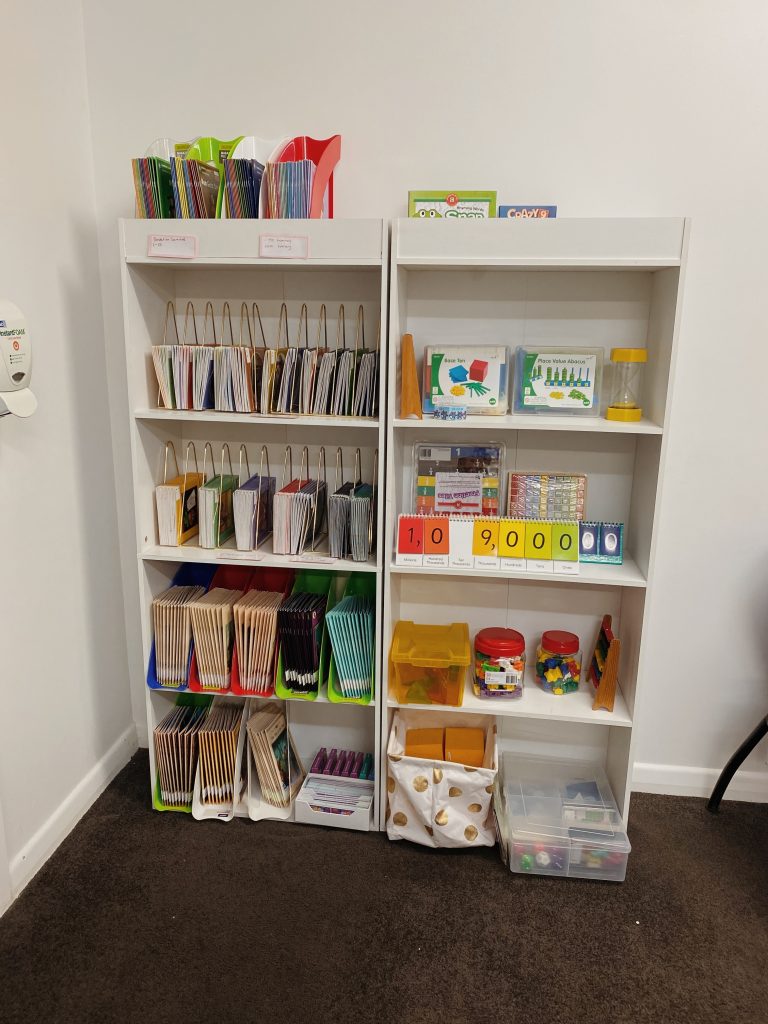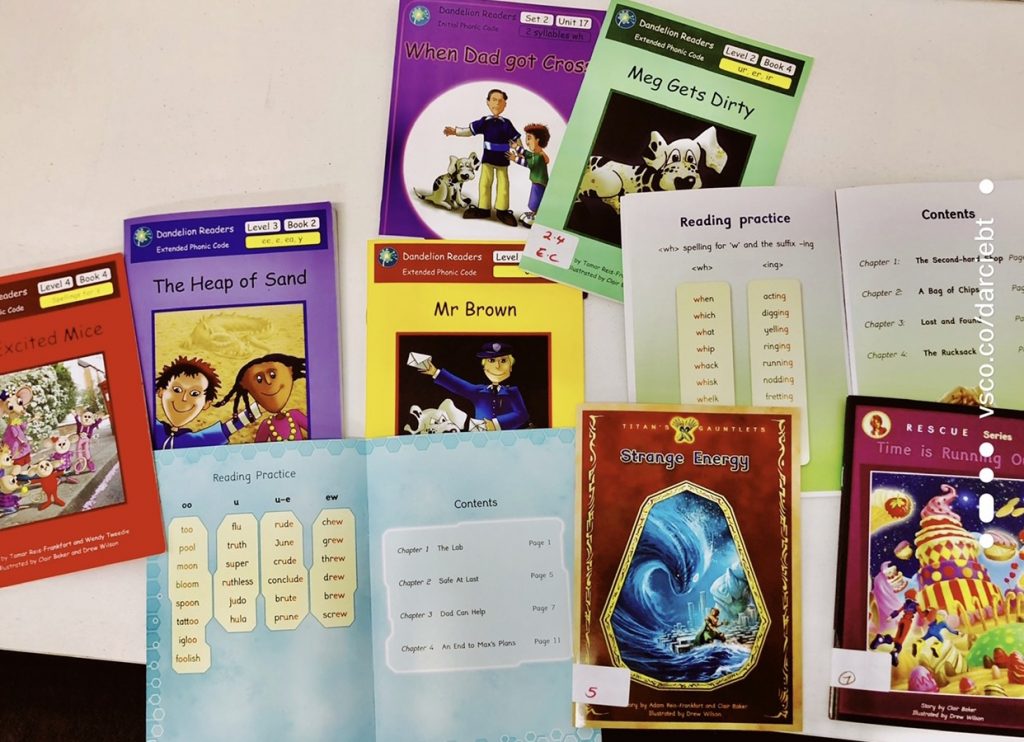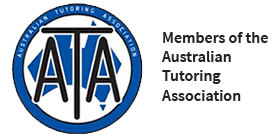
Sounds Write
Sounds Write is a highly structured, systematic synthetic phonics program. The evidence-based linguistic program is recommended by AUSPELD.
Sounds Write teaches students how the alphabetic code works. Fundamentally, it teaches students the key skills required to be effective readers and spellers.
What we need to understand about learning to read is that it is not one skill; it is a complex of skills, conceptual knowledge and code knowledge. Children are biologically primed to learn the language that they speak but are not primed to learn the writing system of that language. We need to teach children the writing system explicitly and systematically.
Sounds Write starts with the skill that children learn naturally: the sounds of their own language.
Sounds Write then teaches that letters or combinations of letters are the ways in which we represent those sounds when we write.
The 3 skills Sounds Write teaches are:
- Segmenting
- Blending
- Phoneme Manipulation
These skills need to be perfected and practised to become a fluent reader.
Segmenting
Segmenting individual sounds in speech is vital for both reading and spelling. To read, the reader must segment the sound-spelling correspondences in a word before blending them to make a recognisable word. When writing, a student also needs to split the word into its component sounds. E.g. /c/…./a/…/t/… and to represent each sound as a letter.
Blending
The skill of blending involves pushing sounds together to form meaningful words. For example /b/ /oa/ /t/ = ‘boat.’
Phoneme Manipulation
The skill of manipulating individual sounds within words enables one sound to be replaced by another. For instance, take the word ‘bat,’ and replace the sound /a/ with the sound /i/ so it becomes ‘bit.’ This skill is essential when the reader is problem solving when decoding. For instance, the letter <o> represents 4 completely different sounds in the words ‘go,’ ‘pot,’ ‘mother,’ and ‘to,’ When reading unfamiliar words, a child needs to decode by trying different letters or spellings and they must be prepared to test out alternatives. Therefore, the reader needs to be able to manipulate sounds instantly. This is a skill proficient readers are able to carry out automatically, and it occurs without having to think about it.

Core Concepts of Sounds Write
To become a proficient and fluent reader, a child must grasp the following:
- English speech is written in a visual code where symbols, known as spellings or letters or graphemes, are used to represent individual sounds (phonemes).
- You can spell a sound with 1, 2, 3 or 4 letters.
- There are many different ways of spelling a sound. (e.g. the sound /ae/ as in ‘rain,’ play,’ ‘gate,’ or ‘break.’
- A spelling can represent more than one sound. (For instance, the spelling <ea> in the words sea, head, break.
A systematic approach to the teaching of reading is required.
We start by teaching that you can spell a sound with one letter. Then, that you can spell a sound with two letters: ff, ll, ss, zz. In the Extended Code children discover through explicit, structured teaching more complex concepts. It is at this point of our English code that many children become confused and find spelling difficult. As many of our sounds have different spellings we begin with the most common and return to that sound, adding more alternatives. Just as in the Initial Code, lessons progress at a brisk pace with a variety of activities in each session. In general, teachers choose a target phoneme and spend 1-2 weeks working with words containing it.
Sounds Write is Multisensory
Sounds Write is also multi-sensory. As children are copying and saying the sounds they are using touch, sight, sound and speech. Using Sounds Write from the start children learn right away that the alphabet code, like any code, is reversible, you can both read and spell it. As they are using their senses, young children make a direct connection between what they hear and what they see written down.
Phonics Books
The secret to getting kids to read, is giving them books they can actually read. Decodable Readers enable children to use their knowledge of sound-letter relationships that they have been explicitly taught and practise their reading fluency through a story. We have the full range of Phonics Books UK, and Little Learners Love Literacy to enable children to practice what they have been explicitly taught in their lessons. This includes books for beginning readers, including Dandelion Launchers and Dandelion Readers and books from the extended code to books for catch-up readers, including the Moon Dog series, That Dog!, Magic Belt series, Alba, Totem Rescue, Titan’s Gauntlet and the Talisman Series. These books are compatible with the Sounds Write scope and sequence.
Good phonics programs, such as Sounds Write, teach children spellings (graphemes) and the sounds they represent. Decodable books offer reading practice, allowing children to blend sounds into words and to segment words into sounds when they spell. Decodable books offer children an opportunity to practice what they have been taught with guaranteed success. In each lesson, we incorporate decodable readers so children are given plenty of opportunity to practice their reading fluency.


What does the research say regarding reading?
The evidence is overwhelmingly in favour of the benefits of a beginning code emphasis and of an early start to phonics knowledge. There is a strong statistical relationship between phonemic awareness skills and success in the beginning stages of reading and spelling. The skills of blending, segmenting and phoneme manipulation have ‘remarkable strong predictions of and correlations with beginning reader acquisition’ (1994, p 81) Marilyn Jager Adam, author of Beginning to Read. Sounds Write is premised on the assumption that children learn the sounds of their own language naturally. Then we establish a link between the sounds and the visual signs (letters/graphemes) that represent those sounds.
There is a reason that Sounds Write is recommended by the peak body AUSPELD. It is a first-rate linguistic phonics program. The program is a highly structured, multi-sensory, incremental and code-oriented, instructional approach to successfully teaching children to read and spell.


Recent Comments